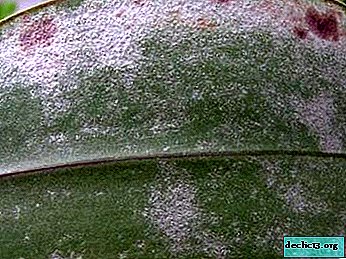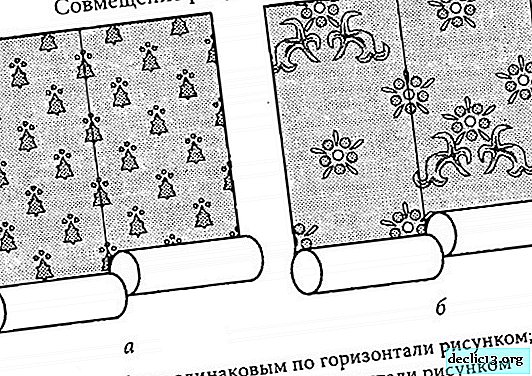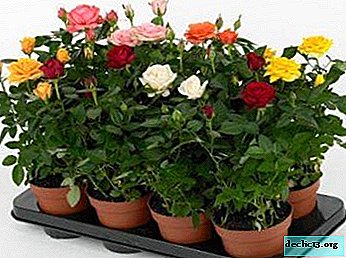Tropical beauty - wrinkled peperomia. Flower Description, Care Tips

Peperomia is a plant that migrated from the tropics. Variety, uniqueness in combination with unpretentiousness generate interest among flower growers, designers and lovers of indoor flowers.
Peperomia is great for decorating your home and porch. By placing the plant in a hanging pot, you can transform the room and add originality to the interior. And if you put a few flower pots on the garden or near the front door - you can create a completely fabulous look.
It will also look unusual and beautiful on the windowsill - in the kitchen or in the bedroom. A beautiful flower, characterized by incredible exquisite leaves that cannot be looked at without admiration.
Botanical Description
Perennial from the pepper family, epiphyte grows on rotten wood.
- What else is called? The wrinkled peperomia earned its name due to the similarity of leaves with peppers. In Brazil, the plant is called dwarf pepper.
- Latin name. It sounds like Peperomia Caperata, and the name of the genus comes from the Greek words peperi (pepper) and homoios (similarity).
- History of occurrence. Peperomia Caperata was first identified and described in 1958.
- Description of the appearance. The leaf blade is fleshy, wrinkled. The color is most often dark green. Petioles are long, slightly ribbed. The height of the plant does not exceed 30 cm. The root system is represented by nodules or creeping rhizomes.
- Geography of habitat. The homeland of peperomia is Brazil.
Photo
You will see a photo of the flower:




Home Care
- Temperature. Stability is the optimal strategy when choosing temperatures that are comfortable for peperomia. These are thermophilic plants that love neither heat nor cold. They feel most comfortable in stable "room" temperatures with average values of about 18 degrees Celsius.
Attention! In cold weather, it is recommended to maintain the temperature not lower than 16 °, optimally - up to 23 °, otherwise the leaves will turn yellow and crumble. With the onset of spring, it grows well at 22-25 °, can be placed on the loggia or balcony.
But it should be protected from drafts and sharp temperature extremes.
It is important to prevent overcooling of the substrate in pots, since the rhizome most often suffers from temperature fluctuations. That is why the plant is not recommended to be placed on cold surfaces.
- Watering. In cold weather, peperomia should be watered in the following mode:
- Each subsequent watering begins only when the substrate is completely dry.
- Water for irrigation should be soft and warm.
- Experienced growers recommend that water be maintained for at least three days.
- Watering with warm water prevents overcooling of the soil.
Watering is carried out with a small amount of water. With humidity, you should not overdo it. The ideal indicator of humidity is not more than fifty percent, it is in such conditions that the plant looks beautiful and healthy. The plant takes calmly to lower humidityTherefore, you can not spend money on a humidifier for air.
All large-leaved peperomies, except for standard procedures, require periodic wiping of the leaves with a damp sponge to remove dust.
- Shine. Peperomia feels good both in partial shade and in diffused light. Remember that it is dangerous to put the plant in direct sunlight, it is likely to get a burn! In winter, it is recommended to purchase special lamps for lighting, otherwise the petioles and leaves are weakened and crushed.
- Priming. The plant is demanding on the quality of the substrate. More than anything else, a plant is afraid of dampness, so it makes sense to buy exclusively loose, airy and permeable mixtures. An ideal combination is soil from decayed leaves and interspersed with sand and peat. And purchased mixes for succulent culture are also suitable.
- Pruning. Suitable for young individuals. When removing part of the plant, it is recommended that an incision be made at a height not exceeding five cm from the ground level. Remember to leave a couple of lower leaves. Young shoots will appear from the trimmed plant, which, if desired, can be rooted.
Reference. As new stems develop, they are also pinched or pruned, which leads to the formation of thick foliage. Extremely large varieties need pruning. Pruning increases the level of bushiness and thanks to this procedure, the plant has an excellent appearance.
- Top dressing. When feeding, it is important to observe seasonality. In winter, peperomia does not need fertilizers, which can not be said about summer. To keep the plant healthy and delight you, it is better to choose complex fertilizers, then there is a chance not to overdo it when feeding. Fertilizing is recommended every two weeks.
- Pot. The capacity is best to choose the classic one, the height should be greater than the diameter, since for the plant lay drainage. The pot should not let air in; it is better to buy ceramic pots with a drainage hole at the bottom.
- Transfer. During the first three years, the plant needs to be transplanted once a year, then growth slows down, so you can transplant the plant every 2-3 years. Pay attention to the roots, if they stick out of the hole - you can not do without a transplant. The best time to transplant is spring.
Choose a shallow pot, form a bottom from the drainage, not more than 6 cm. Expanded clay, brick, charcoal are ideal for drainage. Then the plant must be placed in the center and sprinkled with earth, and then rammed the top layer of soil.
- Wintering. The plant feels comfortable at a temperature of 18 degrees Celsius in bright light. In winter, it is especially worthwhile to monitor the lack of hypothermia and do not overdo it with watering.

Breeding
The attractive appearance of the plant and its decorativeness make true lovers breed peperomia in all possible ways:
- Cuttings. It is easy to propagate by cuttings with a leaf.
- To do this, select a short stalk up to four cm in length and cut the shoot from the mother plant with a sharp knife.
- Next, treat the cut with activated carbon.
- Then, in order to root, place the stalk in moist sand or moss, water can also be used for these purposes, but it must be noted that the maximum immersion depth cannot exceed more than five mm. Within three weeks, roots appear.
- The seeds.
- To propagate the plant with seeds, they must be placed in jars of sand and humus.
- To accelerate the germination of the container, close the lids and keep at a temperature of 24 degrees.
- Periodically, the contents of the cans must be moistened.
- When the sprouts appear on two leaves, you can move the plants into a tank with soil.
- Next - you can plant in pots.
- By the bush. Also, the plant propagates easily with the help of a bush - it is enough to divide the root system and transplant it into another container. After which we will get a new plant.

Bloom
Flowering time of the plant will fall in the summer. Inflorescences begin to form, which can be seen among the leaves. At this time, the plant needs watering and spraying. Experienced flower growers recommend getting rid of flower stalks even at the stage of their formation, since flowering takes away resources from the bush, because of which peperomia can become less dense.
Important! Often there are cases when, after flowering, the peperomia drops part of the stems, and its leaves fall off.Diseases and Pests
With improper care, the plant is sick. Violation of the irrigation system, temperature and cooling leads to falling leaves and the appearance of dark spots. With a high amount of moisture, the leaves begin to rot. Direct sunlight can cause burns.
Ticks, powdery worms, scale insects, nematodes, as a rule, affect a weak plant. To get rid of them, it is enough to treat the plant with fungicides and transplant into steamed soil. It is much easier to prevent a disease than to cure it.
Similar flowers
- Sansevieria Trifasciata Prain - evergreen grassy perennial.
- Saintpaulia Pink Sensation - perennial herb with wrinkled, fleshy leaves.
- Calathea striped - indoor plant with large, dense leaves.
- Saffron calathea - universal plant with yellow flowers.
Wrinkled peperomia is thermophilic, easily propagated by bundles of leaves. It grows not only in loose soil, but also in hydroponic culture. The plant will be an adornment of any collection. You can safely entrust the plant even to beginners. Subject to all the described conditions, peperomia will please with beauty for a long time!

















